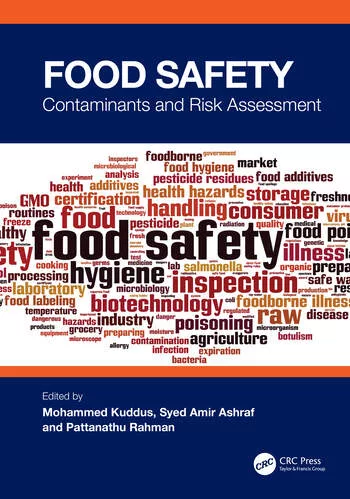Expert Scientists Urge WHO to Reconsider its Draft Guidelines on PFAS in Drinking Water

Credit: RODNAE Productions (rodnae-prod) via Pexels
A group of 116 scientists, who are experts on per- and polyfluoroalkyl substances (PFAS), have written a letter to the World Health Organization (WHO) to express concerns about the draft “Background document for development of WHO Guidelines for Drinking-water Quality” regarding Perfluorooctanesulfonic acid (PFOS) and Perfluorooctanoic Acid (PFOA). The scientists, associated with the Green Science Policy Institute, are recommending that the WHO document be significantly revised to consider numerous peer-reviewed scientific studies demonstrating adverse health outcomes linked to PFOS and PFOA exposure.
The letter objects to the use of a technology-based approach for the development of the WHO guidelines rather than a scientifically defensible, health-based approach. The scientists also argue that the WHO assessment disregards evidence of harm to human health resulting from environmentally relevant exposure levels. Additionally, the letter asserts that WHO’s proposed guidelines are much less protective than what can be achieved by commonly used water treatment technologies.
The letter provides examples illustrating how the WHO survey of scientific studies does not reflect existing evidence of the links between PFOS and PFOA exposure and adverse health outcomes. The authors raise concerns with effects of PFOS and PFOA exposure such as cancer, liver damage, increased cholesterol, and immune damage.
Carcinogenicity
The letter states that the U.S. Environmental Protection Agency (EPA), California EPA, and the U.S. EPA Science Advisory Board (SAB) and its PFAS Review Panel agree that evidence from animal and human studies supports development of a drinking water guideline for PFOA based on cancer risk. Additionally, WHO’s drinking water guidelines for many other contaminants are based on cancer risk. Applying a PFOA cancer slope factor based on human data developed by another authoritative group would result in a drinking water value well below the WHO provisional guideline.
Liver Damage
While the draft document acknowledges the consistent association between PFOS and PFOA exposure and increased serum alanine aminotransferase (ALT), the letter objects to WHO’s determination that the association is small, as well as the conclusion that there is no evidence of liver disease. The scientists cite a U.S. EPA SAB report that determined that population elevations in ALT are reliably associated with increased instances of and mortality from liver disease and other causes, and that ALT should therefore be considered as an endpoint for risk assessment. California EPA is using increased levels of ALT as the basis for its draft non-cancer drinking water value for PFOA.
Additionally, the letter argues that WHO’s draft document ignores evidence of associations between PFOA exposure and biomarkers of liver disease besides ALT across populations. The draft does not consider that small perturbations of ALT are predictably associated with larger perturbations in clinically abnormal values in the general population. According to the letter, such an effect can be seen specifically for PFOA, in both cross-sectional and longitudinal studies and at environmentally relevant exposure levels affecting many contaminated communities.
Furthermore, the letter asserts that WHO’s draft dismisses parallel evidence that PFAS cause increases in biomarkers of liver damage and microscopic changes in liver cells indicative of steatosis (fatty liver) in multiple species of experimental animals, as well as in cultured cells.
Looking for quick answers on food safety topics?
Try Ask FSM, our new smart AI search tool.
Ask FSM →
Increased Cholesterol
The association of PFOS and PFOA exposure with increased total and LDL cholesterol is strongly supported by data from studies of multiple populations using different study designs and is likely causal, the letter states. California EPA is using human studies of increased cholesterol as the basis for its draft non-cancer drinking water value for PFOS. The WHO analysis omits such evidence and speculates that documented associations of PFAS and serum lipids may be caused by “inter-individual variability,” despite evidence from global populations and a replicable dose response in large population studies. Data linking PFAS exposure is also fully consistent with the histologic findings of fatty liver in studies of laboratory animals and cultured cells.
Additionally, the letter argues that WHO’s draft does not mention associations of PFAS with clinically defined high cholesterol, and may leave readers with the impression that there is no excess cardiovascular morbidity, discounting lipid medication needs, costs, and side effect profiles associated with treatment of high cholesterol in exposed populations.
Immune Effects
Finally, the letter takes issue with statements in WHO’s draft regarding immunotoxicity and the value of the vaccine response in serving as a robust marker of immunotoxicity. The U.S. EPA SAB and its PFAS Review Panel concluded that decreased antibody response to vaccines in humans is a valid endpoint for risk assessment because when the vaccine response is suppressed, it indicates that some part of the immune system is not performing at the level that it should. Therefore, epidemiological studies that report diminishment of the vaccine response with increased levels of PFOA or PFOS exposure reflect robust immunotoxicological outcomes.
The letter also argues that the draft discounts supportive rodent data by stating that immunotoxicity caused by PFAS is accompanied by changes in food consumption or weight, although most of the rodent studies cited in WHO’s draft indicate diminishment of the antigen-specific antibody response at administered doses that do not induce changes in body weight or food consumption.
Green Science Policy Institute Recommendations
The letter strongly recommends that WHO issue science-based guidelines supported by a comprehensive review of the scientific literature and commonly used treatment technologies, or otherwise withdraw the proposed guidance. The letter states that PFOA and PFOS are routinely removed from drinking water to non-detectable levels; therefore, treatment removal limitations do not prevent the ability to meet health protective drinking water levels.
Additionally, the letter acknowledges WHO’s concern about the high cost of PFAS remediation. However, the scientists do not believe that the high cost associated with water treatment measures is a valid justification for setting less protective drinking water guidelines.
Finally, the letter requests that, as an authoritative body, WHO identify the names, affiliations, and potential conflicts of interest of those involved in the preparation or peer-review of the draft and any future WHO documents.








